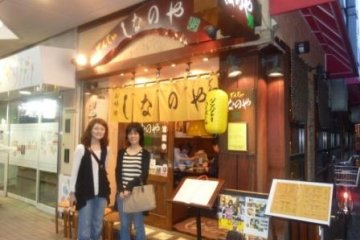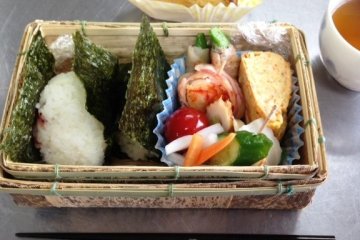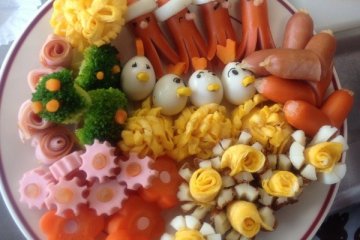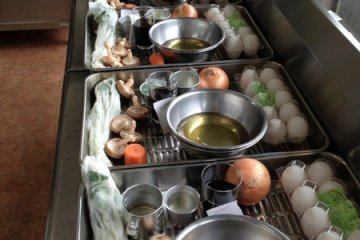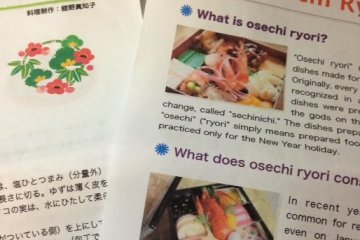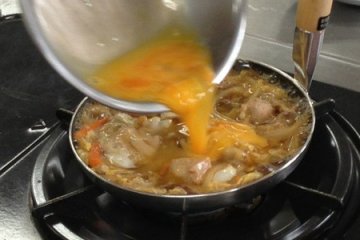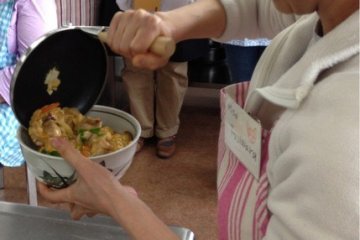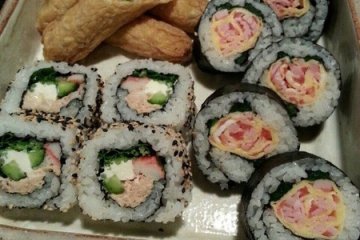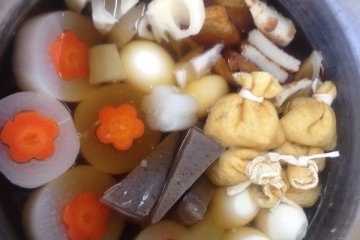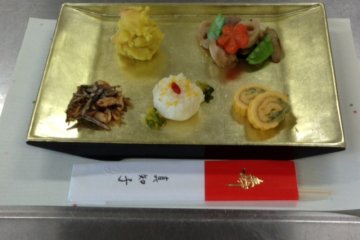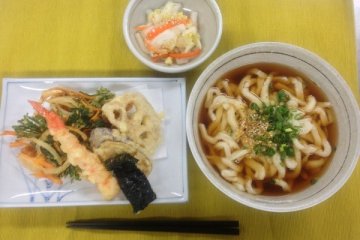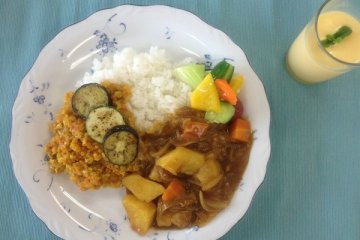Have you ever wondered at the supermarket which fish to buy for sashimi and which one for cooking? Don’t you want to know more about Japanese seasonal ingredients and want to learn how to cook them at home?
If so, cooking classes by Kitchen Nippon are absolutely for you. I discovered the classes a while ago and think that they are really unique and hands-on. For example, we got a small supermarket tour just before the class, which gave us the chance to learn about the relevant ingredients and where to find them in the shops.
The cooking classes themselves are held in English and Japanese. We were divided into small groups of 4 or 5 people, which was great, as it made communication quite easy.
The menu always bears in mind the seasons, traditions and current trends or preferences. For example, in spring it could be a spring bento box, convenient for eating outside. In summer, people learn Okinawan dishes, as Okinawa area has varies of helpful recipes to overcome the humid climate in Japan. Autumn could include some cooked fish dishes, as the fish becomes very rich in flavor and is most tasty. In winter it is time for o-sechi, a traditional New Year’s specialty you can prepare easily at home.
Other popular home cooking recipes include oyako-don (rice bowl with chicken and egg), teriyaki (cooking with a glaze of soy sauce and sugar), oden (boiled food in a broth), decorated maki-sushi, kyara-ben (bento inspired by anime or manga), tempura (battered and deep fried foods) & udon noodle, gyoza & shumai (dumplings originating from China, but they have been loved in Japan for a long time). There are also special classes showing how to make traditional seasonings, for example miso, yuzu-kosho (a popular condiment from Kyushu) or preserved plum (umeboshi), which nowadays are rarely cooked at home.
After being designated as an intangible world heritage, the Japanese cuisine is now being rediscovered also by Japanese, because of its scientifically proven nutrients. Some of the rediscovered foods like ama-zake (sweet drink made from rice and koji (rice malt)) and shio-koji (koji fermented in salt) used to play a large role in the Japanese diet, but they got pushed aside a little by westernized dishes and seasonings. However, some producers have stuck to the traditions of the Japanese cuisine so that it wouldn’t get lost. Thanks to them we now see traditional foods coming back to the Japanese table again and they are now even officially accepted and appreciated as very helpful and powerful ingredients for a healthier life.
I loved the Kitchen Nippon cooking instructors, as they are just wonderful people and so enthusiastic to share their knowledge. I learned that they even appear on TV sometimes!
Apart from the cooking classes Kitchen Nippon also organize a variety of events introducing Japanese culture, like shopping tours in Kappabashi, sake tasting events or food photography classes, providing new and informative opportunities to curious people in a warm and relaxing atmosphere.




